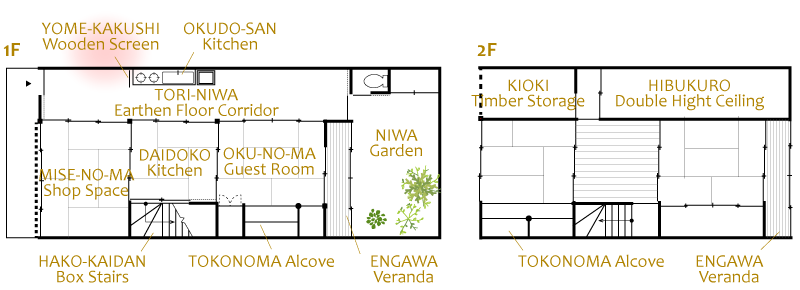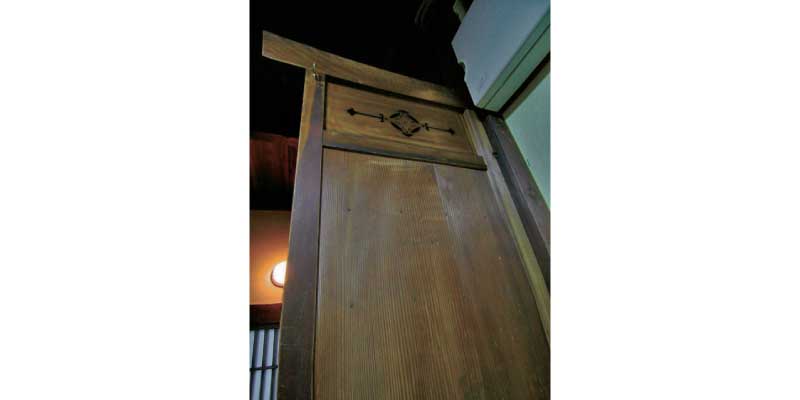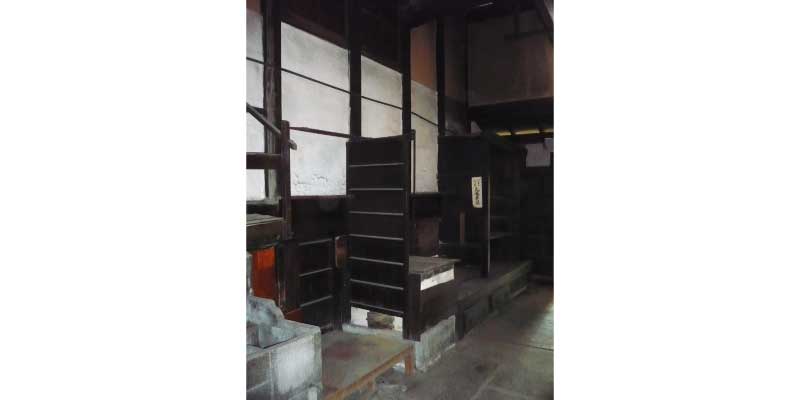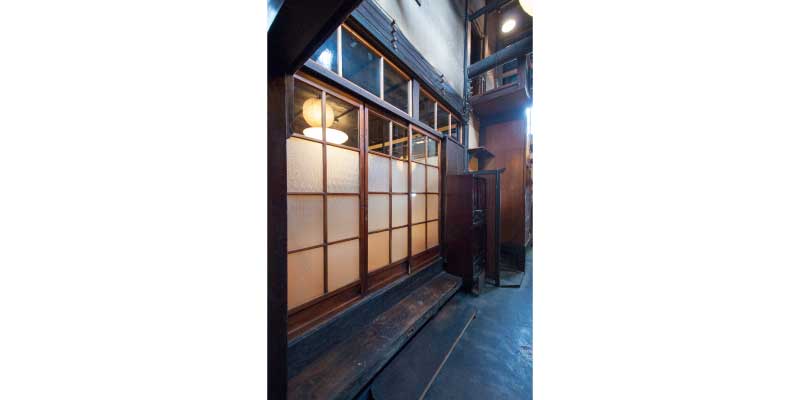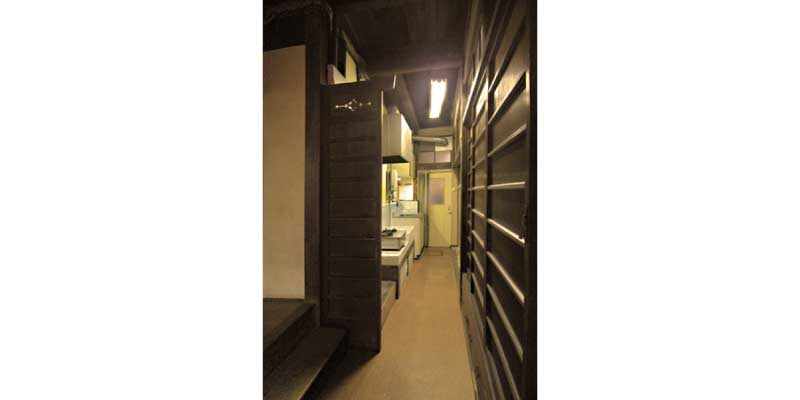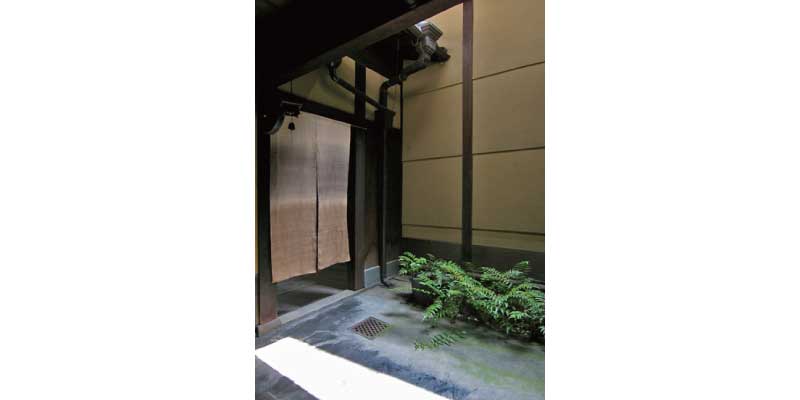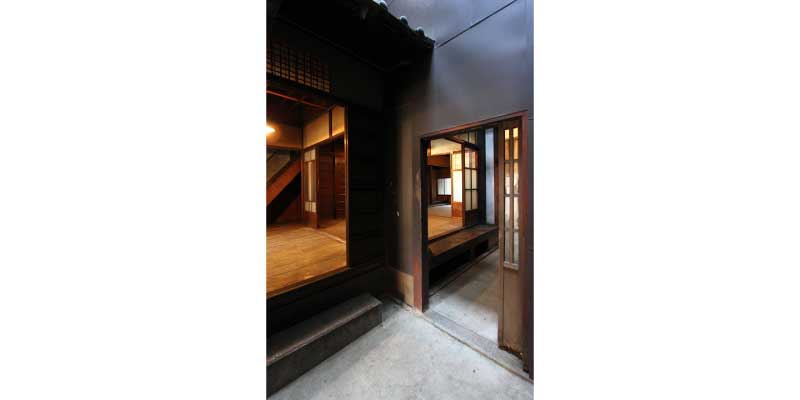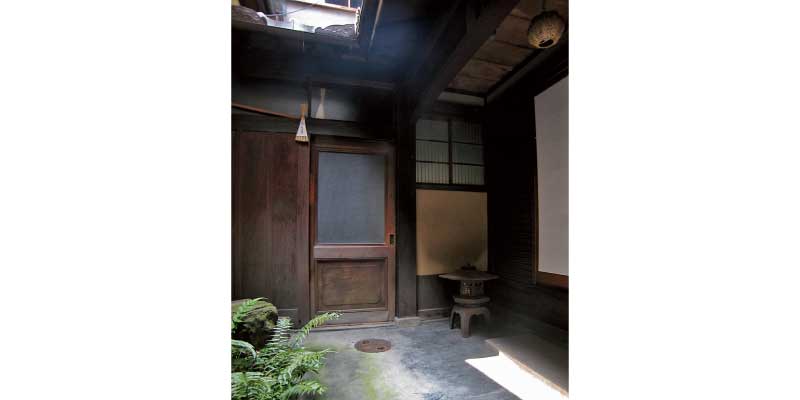YOME-KAKUSHI, NAKA-DO
Wooden Screen, Inner Door
In most Kyo-machiya, where living and business spaces are combined but functionally separated, the plots are narrow in width and long in depth, and therefore, there is generally only one entrance. As the degree of privacy increases the further one goes inside the tori-niwa corridor, a few common spaces evolved to serve as borders to indicate different degrees of privacy.
YOME-KAKUSHI
Single‐leaf Wooden Screen
In front of the kitchen stands a partition called “yome-kakushi” (literally, “bride hiding partition”). This partition implicitly indicated those who were not members of the family should not go beyond without an invitation.
NAKA-DO
Inner Door
This door at the middle of the tori-niwa corridor served as a border between the business space (“mise”) and the inner private space (“hashiri”).
